Elena Orde and Ali Ryland pick their top seven vegan-friendly books that demonstrate a subtle vegan message.
I’m a massive Harry Potter nerd. I know the books back to front, but the last time I re-read the series was the first time I had done so as a vegan. I was actually a bit thrown by how un-vegan it was – the characters seem to be constantly tucking in to huge feasts laden with animal products and concocting potions made with eyes and hair and blood, and don’t get me started on the mistreatment of dragons …
I feel we may have already got a bit off-topic here. My point is that, although of course we can still enjoy our old favourites, sometimes it’s nice to read a book which doesn’t leave you with those moments of frustration. Personally, the books I have most enjoyed recently have had a subtle vegan message – something which indicates that the author, while they are not necessarily vegan themselves, isn’t portraying animals as commodities.
Here are a few of my favourite novels which fit into this category.
PopCo by Scarlett Thomas
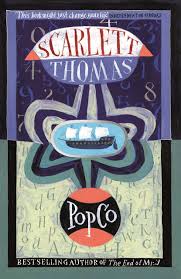 This book is about Alice, a code-breaker with a troubled past who works for a toy-making corporation. If you ever, like me, feel as if you’re in dire need of learning something new in order to prevent your brain from turning to mush, this book is a good bet. It outlines various code-breaking methods in a way which respects the reader’s intelligence, and also briefly explores the history of cryptography, which is fascinating.
This book is about Alice, a code-breaker with a troubled past who works for a toy-making corporation. If you ever, like me, feel as if you’re in dire need of learning something new in order to prevent your brain from turning to mush, this book is a good bet. It outlines various code-breaking methods in a way which respects the reader’s intelligence, and also briefly explores the history of cryptography, which is fascinating.
Alice isn’t vegan at the beginning of the novel, but meets several vegans over the course of the book and is curious to learn more about their values, which in this book is tied in with other themes such as anti-capitalism.
‘Yeah,’ Ben says. ‘There’s something about the way we treat animals that just seems so, I don’t know, dystopian: like contemporary life is like some far-fetched science-fiction novel.’ He gives me a serious look that mutates into a grin. ‘You know, I read about this series of experiments where they got animals to ask for food by pressing buttons. Birds had to balance on a lever. Other animals like pigs and cows used their snouts. The researchers found that cows liked to be stroked, so much that they would press a button to make it happen. The pigs in particular were so advanced that they learnt every single thing they were taught. They were happily pressing buttons for food, for strokes, for toys. I looked at the pictures of these pigs sitting in front of these consoles and I thought, “******* hell, I can’t eat an animal that can play videogames.’
This book is also a great one to lend it to your non-vegan friend as an insidious method of educating them about where animal products come from.
The Humans by Matt Haig
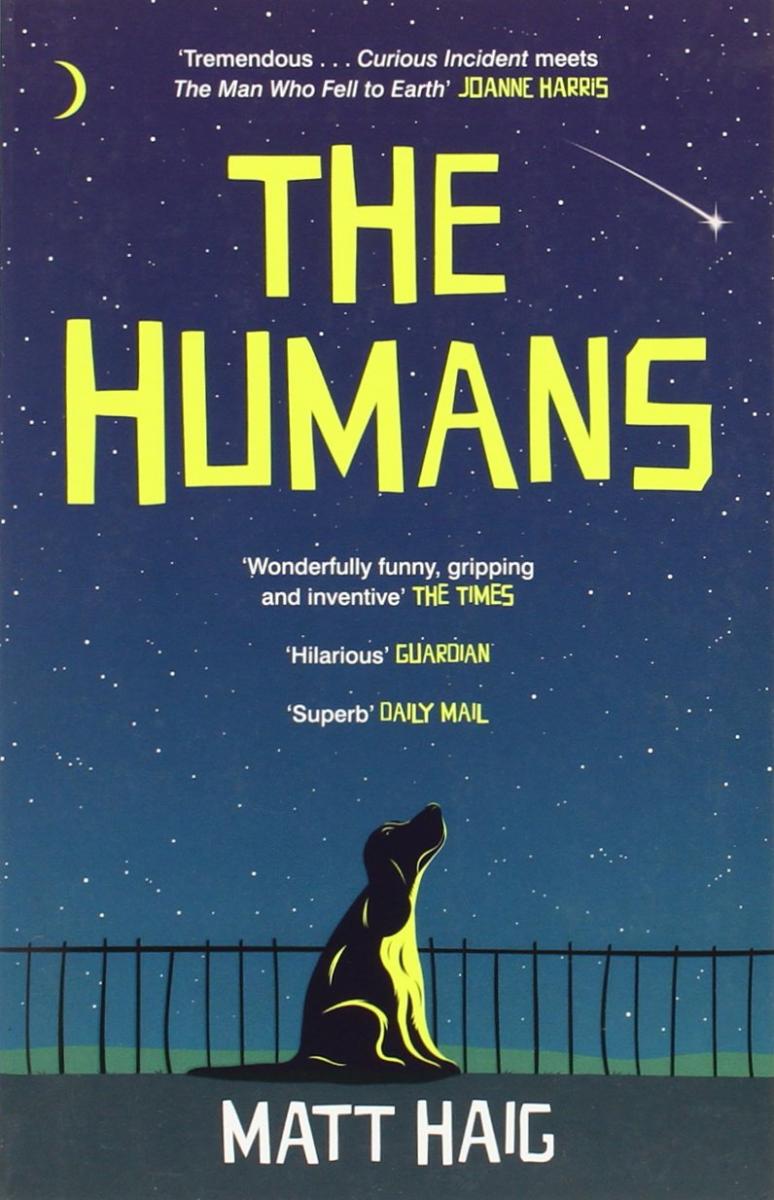 If you haven’t read anything by Matt Haig before, you’re in for a treat. A spokesperson for openness and support for mental health issues, he’s probably best known for his memoir Reasons to Stay Alive, which is also fantastic.
If you haven’t read anything by Matt Haig before, you’re in for a treat. A spokesperson for openness and support for mental health issues, he’s probably best known for his memoir Reasons to Stay Alive, which is also fantastic.
The Humans is about an alien who’s transported into the body of a university professor named Andrew – but if you don’t generally go for books about aliens don’t worry. I don’t usually, either. It’s more about relationships and feeling like an outsider, and is a really interesting way of viewing the strangeness of humanity from an outside perspective.
Although it’s only a small part of the story, one of the strange things the protagonist can’t understand about humans is the way they eat other animals.
I studied the ingredients on the worktop. Mainly green vegetation. But then something else. Chicken breast. I thought about this. And then I kept thinking. The breast of a chicken. The breast of a chicken. The breast of a chicken.
‘That looks like meat,’ I said.
‘I’m going to make a stir-fry.’
‘With that?’
‘Yes.’
‘The breast of a chicken?’
‘Yes, Andrew. Or are you vegetarian now?’
The dog was in his basket. It went by the name of Newton. It was still growling at me. ‘What about the dog’s breasts? Are we going to eat those, too?’
‘No,’ she said with resignation. I was testing her.
‘Is a dog more intelligent than a chicken?’
‘Yes,’ she said. She closed her eyes. ‘I don’t know. No. I haven’t got time for this. Anyway, you’re the big meat eater.’
I was uncomfortable. ‘I would rather not eat the chicken’s breasts.’
Andrew does, however, find something that he does enjoy eating – peanut butter. He also forges a strong relationship with Newton the dog. Is there really anything not to like?
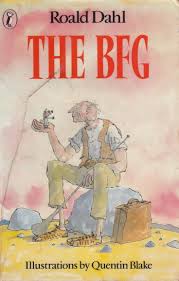 The BFG by Roald Dahl
The BFG by Roald Dahl
I was Roald Dahl-obsessed as a child. I think I had The BFG on cassette tape – I seem to remember listening to it on long car rides with my parents. It had that wonderful dark edge that all good children’s books seem to have – I’m sure my parents didn’t mind listening along too (although that may have changed as we approached the fifth playing).
I’m sure that everyone knows the story, but just in case a few of you out there seriously missed out – the BFG is the story of an orphan, Sophie, who is kidnapped by the Big Friendly Giant, the only giant in Giant Country who does not eat children.
‘I is not understanding human beans at all. You is a human bean and you is saying it is grizzling and horrigust for giants to be eating human beans.’
‘I think it’s rotten that those foul giants should go off every night to eat humans. Humans have never done them any harm.’
‘That is what the little piggy-wig is saying every day,’ the BFG answered. ‘He is saying, “I has never done any harm to the human bean so why should he be eating me?”’
‘Oh dear,’ Sophie said.
‘The human beans is making rules to suit themselves,” the BFG went on. “But the rules they is making do not suit the little piggy-wiggies.’
Suitable for all children, adults, in-betweens and dogs, I’m sure you’ll agree.
Oryx and Crake by Margaret Atwood
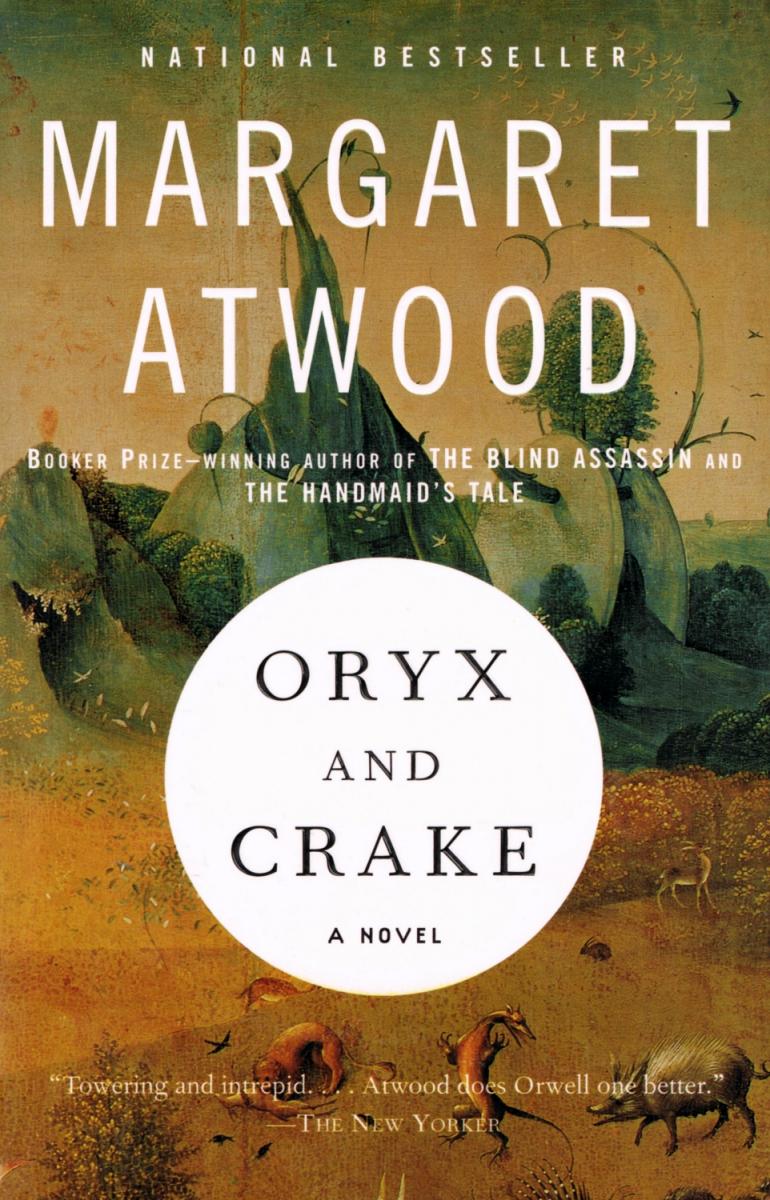 Now here’s a novel that is decidedly not suitable for children. While not a vegan novel, it is essential reading for anyone who has not grasped the calamitous effect we are having on the natural world. In Atwood’s society where rightwing libertarianism and global warming have run amok, what’s mainly on the menu is soy-based snacks. While the latter part sounds like rather a good thing, it’s frustrating that none of the characters have made the connection between animal agriculture and climate change. Instead, all (barring the vegan cult contingents – yes they exist) wish for a bygone age when meat production was still viable. But this longing for a time of human domination is not depicted in a positive light.
Now here’s a novel that is decidedly not suitable for children. While not a vegan novel, it is essential reading for anyone who has not grasped the calamitous effect we are having on the natural world. In Atwood’s society where rightwing libertarianism and global warming have run amok, what’s mainly on the menu is soy-based snacks. While the latter part sounds like rather a good thing, it’s frustrating that none of the characters have made the connection between animal agriculture and climate change. Instead, all (barring the vegan cult contingents – yes they exist) wish for a bygone age when meat production was still viable. But this longing for a time of human domination is not depicted in a positive light.
Pigoons, pigs used to grow human organs for transplants – as is horrifyingly beginning to happen – ironically turn on their oppressors after the novel’s central catastrophe, even eating them. The novel is an interesting read from a vegan perspective as it unpicks various themes, including modern day disgust with lab grown meat, and then sees humans pay for their rampant and cruel consumption.
"This is the latest," said Crake.
What they were looking at was a large bulblike object that seemed to be covered with stippled whitish-yellow skin. Out of it came twenty thick fleshy tubes, and at the end of each tube another bulb was growing.
"What the hell is it?" said Jimmy.
"Those are chickens," said Crake. "Chicken parts. Just the breasts, on this one. They've got ones that specialize in drumsticks too, twelve to a growth unit."
"But there aren't any heads," said Jimmy. He grasped the concept-- he'd grown up with sus multiorganifer, after all-- but this thing was going too far. At least the pigoons of his childhood hadn't lacked heads.
"That's the head in the middle," said the woman. "There's a mouth opening at the top, they dump nutrients in there. No eyes or beak or anything, they don't need those."
"This is horrible," said Jimmy. The thing was a nightmare. It was like an animal-protein tuber.
This book is a great one to give to your eco-conscious friends, as you can debate with them how different the world may have been if veganism had triumphed.
Watership Down by Richard Adams 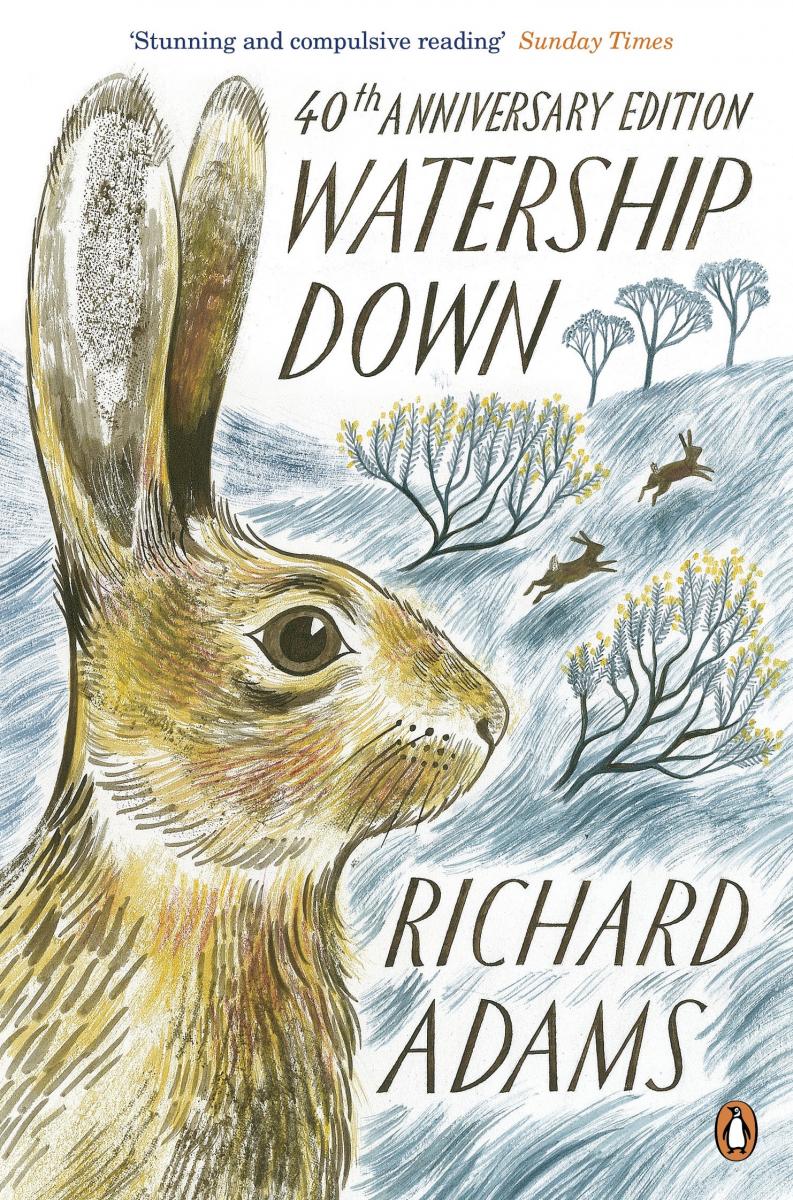
I love the story of how Watership Down came to be published after being rejected seven times. ‘Who would want to read a story about a bunch of rabbits?’ you can imagine an intimidating publisher-type asking (probably while doing something evil and corporate-looking, like chewing on a cigar). Millions of people, apparently.
Watership Down is a story about a group of rabbits who are forced to leave their home, as the warren is demolished to make way for building works. Right from the beginning it shares a powerful message about our disregard for the countryside and the wildlife who live there.
It includes a terrifying scene in which one of the rabbits finds himself caught in a snare, and is rescued by his friends. It also shares a message about the animals we call ‘pets’, and the quality of their lives. This excerpt is from a chapter in which Hazel and co rescue a group of rabbits kept in a farm, ‘in a box’.
‘I am Hazel-rah,’ he said. ‘I have come to talk to you. Can you understand me?’
The answer was in a slightly strange but perfectly intelligible Lapine.
‘Yes, we understand you. My name is Boxwood. Where do you come from?’
‘From the hills. My friends and I live as we please, without men. We eat the grass, lie in the sun and sleep underground. How many are you?’
‘Four. Bucks and does.’
‘Do you ever come out?’
‘Yes, sometimes. A child takes us out and puts us in a pen on the grass.’
The Bees by Laline Paull 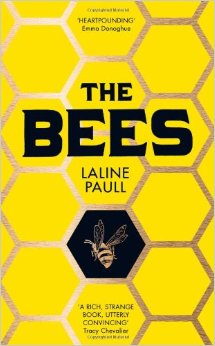
Considering The Bees is labelled as “Watership Down for The Hunger Games generation” it’s no surprise we’re placing them one after the other. This well-researched novel into the life of a honeybee is one that will have you think twice about picking up that honey jar. Many people do not realise how advanced bees really are: it’s thought that they may even be able to dream, while honeybees’ complex actions within the hive are truly extraordinary. This is what Paull is attempting to show, albeit with a heightened fantasy element. The amount of times I Googled for answers to questions such as “Do honeybees really have a ‘fertility police’?” or “Do they massacre drones before the onset of winter?” were many, and each time I was surprised to see the truth.
This insight into the hive makes it all the more emotionally riveting when disaster strikes, and the entire roof of the hive is ripped off, causing death and misery. The reason? For honey of course! The novel also warns of the effects of climate change, which have destroyed the lives of many bees via late frosts and other unfortunate events. These ‘small’ changes may pass us by, but not other animals.
The bouquet of the hive was drenched in the smell of its own honey and coiling with smoke. Thousands of her sisters swirled above the hive and in the trees, choking in the dazing smoke.
'The Visitation!' some screamed. 'The end of the world!'
'Thief!' shrieked others, alarm glands flaring uselessly. 'Thief!'
Dagger at the ready and determined to defend her home, Flora tried to keep to her homecoming path, but the rising smoke forced her back up into the orbit of her raging, helpless sisters, foragers and house-bees alike.
The smell of honey rose stronger - and the cause was obscene.
The roof of the hive lay upside down on the grass so that the top storey was totally exposed to the air. The smoke came from a spouted canister, held by an old man in a red dressing-gown and bare feet. He crooned to the bees as he waved it, sending them into a smoke-dazed gyre. Slow and stiff, he lifted out an entire wall of the Treasury, dripping golden wealth from its broken vaults, and slid it into a white plastic bag.
Unable to come down through the powerful smoke, sisters glimpsed the atrocity and roared in disbelief.
'The Visitation!' they cried out to each other. 'It is all true - the Visitation!'
At this word Flora reeled back in the air. The Visitation - the third panel in the Queen's Library. Now the smells and symbols fitted together in a fearful shape - the ugly gaping hole in the top storey, brutal damage to the beautiful labour of generations of sisters. The honey and the smoke.
The old man bent to pick up the angled wooden roof. It was heavy and he staggered as if he would fall - then with a painful effort he replaced it over the exposed hive. Then he stooped for his smoker and the white plastic bag, and shuffled barefoot back through the orchard.
Fire Bringer by David Clement-Davies 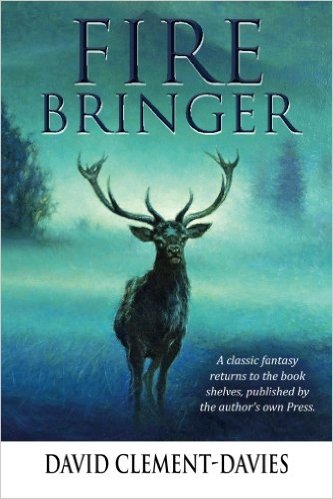
Young adult fiction is choc-full of personified animals, but all ages will appreciate this compelling fantasy that follows the trials and tribulations of a red deer named Rannoch in ancient Scotland. While the primary antagonist of the novel is another stag evilly named Sgorr (a good mix of scar and gore there – of which said deer has seen plenty of!) you never forget who the deer’s main enemy is: us.
‘We must get out of here,’ said Bracken suddenly. ‘If there are men about, we’re all in danger. ‘
‘No, no,’ soothed Scarp. ‘They won’t come into the park at this time of year. It’s unheard of, really. Besides, a hind has little to worry about.’
‘Quite,’ said Dearg calmly. ‘And your bucks are hardly old enough, are they now? I mean, not an antler among them.’
‘What do you mean?,’ stammered Bracken.
‘Well I don’t want to be rude,’ said Dearg, ‘and I’m sure one day they’ll grow up to serve the herd proudly in the Hunt-’
‘The Hunt?’ gasped Bracken.
The hinds stared at the stags in disbelief but the full horror of understanding was beginning to dawn on them.
‘Oh dear,’ said Dearg mournfully. ‘I’ve said too much haven’t I? But they’ll get used to the idea. We all do. I mean, what else is a stag for but to die bravely in the Hunt?’
Since the launch of this blog we've had people suggest other titles to add such as The Martian, Under the Skin, Extremely Loud and Incredibly Close. Would you like to add your review of these books or books like these to our blog? You can email us using the email below.
By Elena Orde and Ali Ryland
Would you like to write for our blog? Read our guidelines then email web[at]vegansociety[dot]com with your pitch.
The views expressed by our bloggers are not necessarily the views of The Vegan Society.


Comments
Upcoming 2021 YA Novel With An Actual Vegan Protagonist!